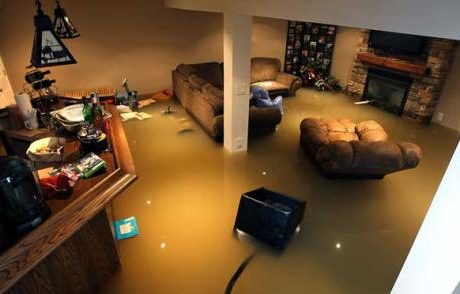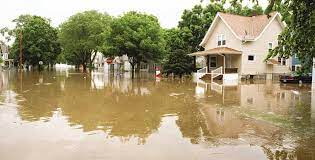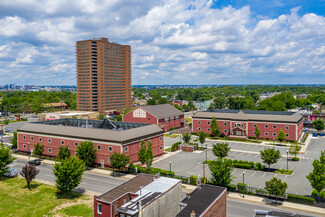Here at PuroClean Emergency Recovery Services New Jersey, we’ve seen it all when it comes to water damage in New Jersey. From the everyday drip of a leaky faucet to the devastation of a flash flood, our state knows how to bring the wet stuff. But don’t panic, homeowners! Understanding the most common culprits behind water damage is the first step to keeping your home safe and dry.
In this blog post, we’ll break down the top water woes New Jersey faces, and more importantly, how we can help you get your house back to normal, quickly and efficiently. So, keep reading to learn how to identify potential problems and what to do if disaster strikes!
What is water damage in New Jersey?
In the context of homes and buildings, water damage refers to any harm caused by water intruding into areas it shouldn’t be. This can happen due to various reasons, like heavy rain or leaky pipes. The water intrusion can lead to a number of problems including:
Mold growth: Moisture creates a perfect breeding ground for mold, which can cause respiratory problems and property damage.
Rotting wood: Water exposure can weaken and rot wooden structures in your home, compromising their integrity.
Structural damage: Water damage can weaken foundations, walls, and ceilings, leading to major structural problems.
Damaged belongings: Water can damage furniture, carpets, electronics, and other valuables in your home.
Electrical hazards: Standing water can create electrical hazards, posing a risk of shock or fire.
What are the water issues in New Jersey?
Water Damage in New Jersey happens a lot. New Jersey faces a few different water challenges:
Contamination: Lead pipes and aging infrastructure can leach contaminants like lead into drinking water, especially impacting older cities like Newark.
Source Stress: The state relies heavily on both surface and groundwater, and with development and climate change, these sources can become strained during periods of low rainfall. This can lead to restrictions on water use.
Flooding: From overflowing rivers to coastal storms, New Jersey is susceptible to flooding threats. Sea level rise further complicates this issue.
Different Causes of Water Damage in New Jersey
1. Heavy Rainfall and Flooding
The Threat: New Jersey’s notorious for downpours, overflowing rivers, and coastal storms that can lead to flash floods. Floodwaters can overwhelm basements, crawlspaces, and even first floors, causing significant damage.
Preventative Measures:
Elevation: Consider elevating appliances and valuables in flood-prone areas.
Flood Barriers: Install temporary flood barriers around doorways and crawlspaces.
Grading: Ensure proper grading around your foundation to direct water away from your house.
Clean Drains: Regularly clean gutters and downspouts to ensure proper water flow.
Know Your Shutoff: Locate your main water shutoff valve and know how to use it in case of an emergency.
2. Leaky Roofs and Poor Drainage
The Threat: A leaky roof or clogged gutters can allow water to seep into your attic, walls, and ceilings, leading to mold growth, structural damage, and costly repairs.
Preventative Measures:
Roof Maintenance: Schedule regular inspections and repairs for your roof.
Gutter Cleaning: Clean gutters and downspouts at least twice a year, especially after heavy storms.
Trim Trees: Keep tree branches away from your roof to prevent leaves and debris from clogging gutters.
Check Attic Ventilation: Ensure proper ventilation in your attic to prevent moisture buildup.
3. Frozen Pipes
The Threat: During freezing temperatures, water in your pipes can freeze and expand, causing them to burst. This can lead to significant water damage throughout your home.
Preventative Measures:
Insulation: Insulate exposed pipes in attics, crawlspaces, and exterior walls.
Drip During Cold Snaps: Allow a slow drip from faucets during cold weather, especially if you plan to be away.
Seal Leaks: Address any leaks promptly to prevent them from freezing and expanding.
Know How to Shut Off Water: Locate your main water shutoff valve so you can isolate the water supply in case of a pipe burst.
4. Faulty Plumbing Systems
The Threat: Over time, pipes, hoses, and connectors in your plumbing system can wear down, leading to leaks and potential water damage.
Preventative Measures:
- Regular Inspections: Schedule periodic inspections by a qualified plumber to identify potential problems early on.
- Replace Old Components: Proactively replace aging pipes, hoses, and connectors before they fail.
- Washing Machine Maintenance: Check and replace washing machine hoses every 5 years to avoid a burst hose disaster.
- Look for Signs of Leaks: Be mindful of water stains, dampness around fixtures, and unexplained increases in your water bill, which could indicate a leak.
By following these preventative measures, you can significantly reduce your risk of water damage in your New Jersey home. But remember, if water damage does strike, don’t hesitate to call PuroClean Emergency Recovery Services New Jersey on (877) 750-7876. We’re here to help you get your home back to normal, quickly and efficiently.
Water damage restoration cost in New Jersey
The cost of water damage restoration can vary greatly depending on the severity of the damage, the size of the affected area, and the type of water involved (clean, gray, or black water).
Average cost: Nationally, the average cost for water damage restoration falls between $1,300 and $5,600.
Solution of Water Damage in New Jersey
Our technicians are trained to use proper protocols to carry out water damage mitigation service and we will reduce the risk of mold growth with thorough cleaning. Make sure you give us a call as soon as you notice a water damage problem in New Jersey at (877) 750-7876.




 PuroClean Emergency Fire, Water and Mold Damage Restoration New Jersey
PuroClean Emergency Fire, Water and Mold Damage Restoration New Jersey